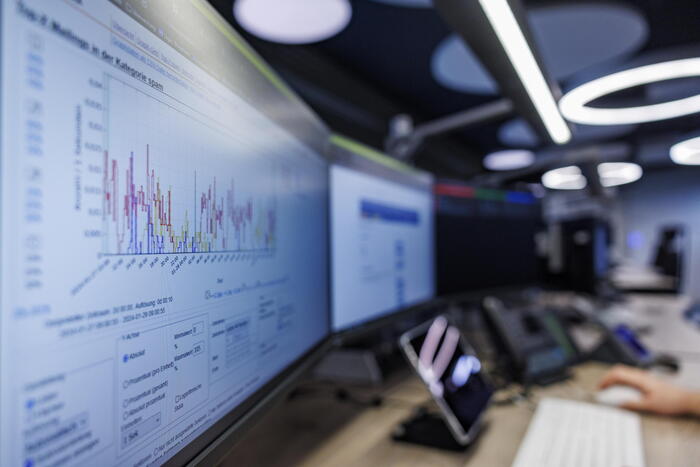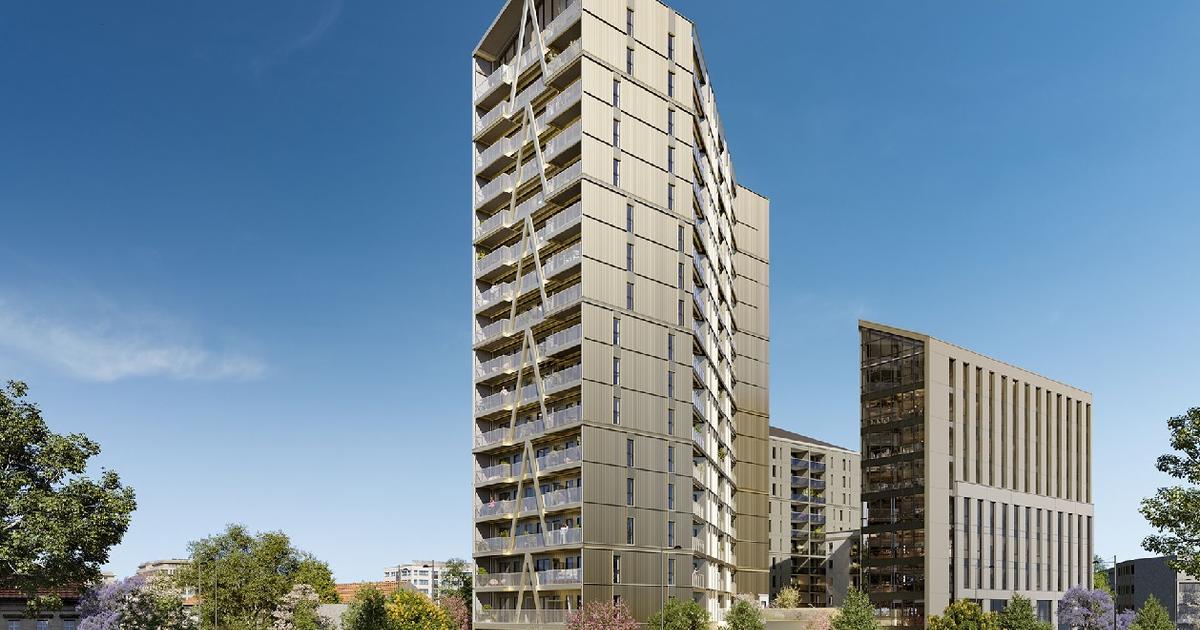Home automation now concerns household appliances as well as audiovisual or the world of the bathroom.
The arrival of the smartphone has relegated remote controls to the background.
All home functions are now controlled from a smartphone with apps, and we talk to our house through a voice assistant.
"The era of home automation" is changing everyday life
From the bottom of our bed, we can, for example, ask him to close the shutters and turn off the light.
“We have finally entered the era of home automation.
This term has been abandoned in favor of “smart home”, although it has never been so topical.
All scenarios become possible, the only border is the imagination or the ignorance of the limits of these systems which make it possible to solve a large number of problems of everyday life
, notes Franck Pichereau, president of Nice France, specialist in automation. of habitat.
You can automate tasks and centralize commands to make life easier for people with reduced mobility.
She will operate her shutters and lighting with a single button, the doors will open as she passes... You also have the option of programming scenarios to save time and comfort.
Read alsoHousehold appliances connect to everything
SEE ALSO
- Big Bang Eco: how will we live in the autonomous connected car?
For example, your bathroom comes to the right temperature in the morning, your shutters open and your coffee is brewed.
It is possible, by enslaving your motorizations to a detector, to ensure that one action leads to another.
Thus, if the fire detector is triggered, your shutters open, your front door unlocks, the lights come on to facilitate evacuation and the arrival of help.
Another option: connect your air conditioner and your roller shutters to a sun sensor, in order to better regulate the temperature of a room and consume a minimum of energy.
Is home automation still so expensive?
Home automation equipment, originally expensive and complex, has now become accessible, from a financial and technical point of view.
“There is no longer any need to ask an electrician to pull a cable to integrate equipment into an installation.
The devices can be connected without work.
Their design has evolved enormously, and it is no longer necessary to embed them in the walls.
Most can be installed by an individual.
As a result, prices have been divided by 10. Today, for €1,000, you can manage thermal comfort, lighting, audiovisual equipment in your living room, centralize the opening of shutters and control the together by voice.
10 years ago, such an installation would have cost €10,000.
, analyzes François-Xavier Jeuland, president of the Connected and Responsible Real Estate Observatory (OICR).
Read alsoA connected home for aging well
SEE ALSO
- Big Bang Eco: will the metaverse change our lives?
The home automation box is the heart of the system.
It makes the link between connected objects and the internet box.
She also saw her prices drop.
“Depending on their level of DIY, consumers can call on an installer or order the TaHoma Switch box and take care of the installation themselves.
Somfy offers one hour of telephone assistance with a technician to help the user get to grips with his box, configure the products, create personalized scenarios, etc.”
, explains Marie Canetta, access, security & connected marketing manager for Somfy France.
All everyday objects now have the possibility of being connected.
Daisy Daisy / stock.adobe.com
For individuals who wish to centralize some basic commands in their home, this brand has just launched a connectivity kit, sold only on its site for the moment.
It accepts around twenty equipment: rolling shutters, garage door, gate, etc. This kit makes it possible to program simple home automation scenarios.
The installations are scalable.
Some somewhat complex settings, such as those of a heat pump or a roller shutter motor, require the intervention of a professional, but the user can manage the interface of many connected objects himself (light bulbs , sockets, cameras, sound bars…).
Read alsoThis is what the connected home of tomorrow will look like
SEE ALSO
- Expert opinion: home automation and digital technology to take care of the elderly
Compatibility: towards harmonized home automation?
Until recently, each industrialist had his “proprietary protocol”, his language, which made the consumer captive of a brand.
For example, a Somfy roller shutter motor could only be controlled by the home automation box marketed by this same brand.
Partnerships came to upset this model, and objects communicating with protocols open to several brands flooded the market.
Philips Hue bulbs are, for example, compatible with ZigBee (another language) and the Bluetooth standard.
The Yubii Home box works with more than 3,000 devices from other brands.
Somfy, with its So Open program, has agreements with the biggest names in the home, as well as with voice assistants Amazon Alexa, Google Assistant and Apple HomeKit.
Read alsoConnected objects to reduce the energy bill at home
“The Delta Dore Tydom 1.0 box, released in 2015, has been enhanced. It works with Alexa, Google Home and allows more programming. In a few days, it will be replaced by Tydom Home, compatible with ZigBee, sold for €189. This new box will continually benefit from additional functions”
, reveals Guillaume Etorre, general manager of Delta Dore.
You do not need to renew your hardware each time you want to connect other equipment.
Compatibility can be obtained by updates or by adding a dongle (program on USB key to plug into the box).
The Homee home automation box comes, for example, in the form of cubes, which can be purchased separately and stacked to open up your system to other languages.
The central unit (“brain cube”), offered as a control for Hörmann garage doors, incorporates this manufacturer's protocol as standard and is compatible with many others.
Read alsoMyTeepi, a connected concierge for isolated homes
What is Matter, the universal home automation protocol?
This stacking of layers will soon no longer be necessary, because a universal protocol has just been adopted by home automation players united in a global consortium: Matter.
“The brands will begin to deliver, from the second half of 2022, objects that are compatible with each other and easy to install.
You will have to take the reflex to look for the Matter logo on the connected devices.
In a few years, we will probably no longer need a home automation box.
With the advent of Matter, which is largely based on the IP protocol, equipment will be able to communicate directly with a voice assistant or a smartphone
,” predicts François-Xavier Jeuland.
Note that households equipped with the Freebox Delta can already do without a home automation box since Free has concluded an agreement with Somfy to integrate the TaHoma software into its box.
"In a few years, connected objects will naturally be supported by the boxes of all telecom operators, which will integrate Matter"
, adds our expert.
Manufacturers of connected objects will harmonize their protocols.
NicoElNino / stock.adobe.com
Control your smart home remotely
Thanks to your smartphone, you can control the automations of your home remotely.
Whether you are at work or on vacation, you have access to your heating, your video surveillance system, the motorization of your gate, as well as various detectors to make your home safer, more comfortable and more energy-efficient. energy.
It is possible to launch actions remotely, such as turning on your boiler, opening your door to a delivery person, triggering the automatic watering system, turning off the television so that the children go to bed...
Read also“A 100% connected house is useless”
Two-way radio communication technologies give you the assurance that your order has been received by the engine by sending you a notification.
You can also monitor everything that happens at home in your absence thanks to connected detectors and better prevent the risk of domestic accidents.
In the event of a water leak, power outage, fire alarm or carbon monoxide release, your app notifies you.
An alarm currently on the market warns you in real time if it detects a person lurking in front of your door.
If you have a smart lock, you can monitor entries and exits.
You will know, for example, if your children are safely back from school.
And it will be possible to trigger the closing of your connected shutter, if you realize that you forgot to close a window.
Home automation to simulate his presence or prepare his return
Controlling your blinds, lights or hi-fi remotely is also a simple way to simulate your presence to deter burglars.
Read alsoThe market for connected objects finally takes off in France
If you have activated geolocation on your smartphone, certain equipment will locate you and anticipate actions.
An innovation in the field of connected thermostats cuts, for example, the heating if it notes that no occupant is present.
If you are going home, the algorithm calculates the time it takes you to arrive, and determines when it must start the heating to reach the set temperature.
Likewise, thanks to GPS, your gate or your garage door open or close automatically when you are nearby.
No need to let go of the steering wheel!
Finally, troubleshooting is also done remotely.
Manufacturers are developing platforms to access your connected equipment and perform an initial diagnosis.
Your installer will be able to reconfigure certain parameters and will follow the alerts in real time.









